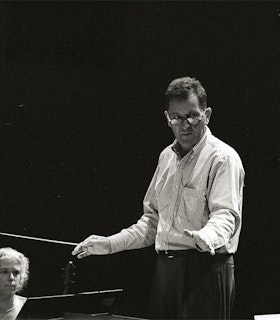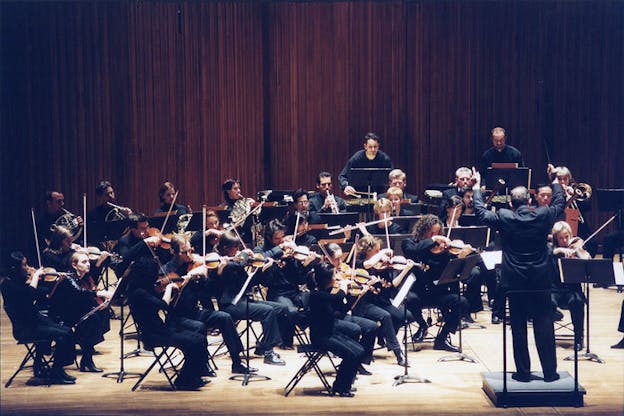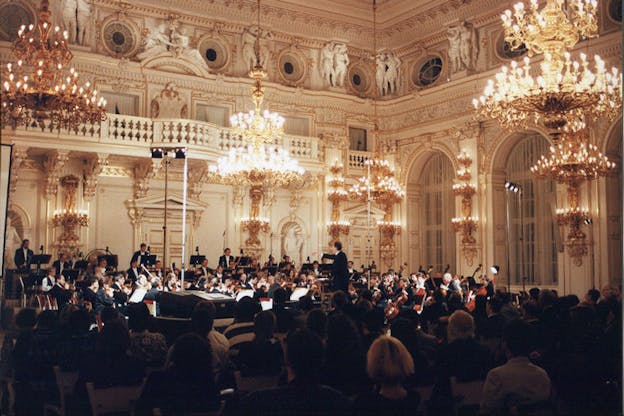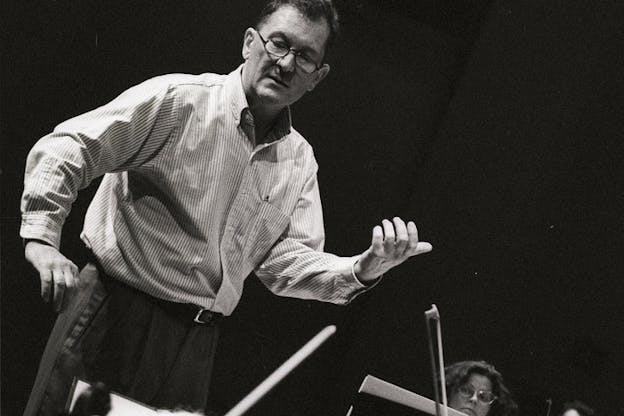Petr Kotik

I was able to embark on such a large scale project [Composition for Orchestra 2] precisely because of the [Grants to Artists] grant.
- Petr Kotik, January 15, 1998
Artist Statement
It is difficult to explain why one pursues the life of a composer. At age fourteen, I started to study flute, and only later, at nineteen, I became a composer. By that time, I was a known flutist, performing in public with some of the best-known musicians in Prague. To this day, I divide my time between composing and performing, producing concerts of music I feel close to, including my own. I have never been a freelance performer.
The most essential issue for an artist is independence from opinions of others and from pressure to conform and succeed. This is especially true for a composer, who produces work that is utterly intangible. A degree of confidence in one's own work is what may lead to independence, and for that, one needs, among other things, a supportive environment.
From the beginning of my musical life, I have been a respected performer, which was acknowledged by my colleagues and by the public later on. This is perhaps what helped me to become independent as a composer. My high standing as a performer helped me to look at reactions to my music as a secondary thing. As far back as I remember, concerns with public success of my compositions have not been important.
I take composition as a separate entity from performance. Music is not about sound (although it is sound), just as a painting is not about looks (although it is something we look at). Whether they are attractive or beautiful is irrelevant. What is it about, then, that we are doing? To come up with a clear answer is almost impossible, and it may not be necessary. The work has to be true to itself and sincere in what it expresses—yet recognizing the truth in a piece of art is far from certain. The positives usually carry a question mark; it is the negatives that we feel sure about. We do have an idea what is false and what one shouldn't and will not do.
My work is not about what I like or dislike; it is about what I feel that should be done, what I should do regardless of whether I like it or not. (To focus on myself never interested me.)
At the start of each composition is a vision that leads to a process that inspires ideas and creates the music. My vision may be vague or concrete, and on occasion, it may even include an image of particular performers. In the course of creating a composition, spontaneous ideas often emerge, but the key factor is the use of a method: a process outside myself that brings the work close to an objective level. The method I use is like a game in which controlled chance alternates with conscious, intuitive decisions. Writing and drawing ideas on a piece of paper (often a large graph paper) is an important part of the work. The process of composing is often intercepted by a series of editing changes to get rid of banalities. But what is banal is clearly personal. It comes from within, and dealing with it leads to the finishing stages of the composition, which is completed when it cannot be improved any further.
- October 2014
Biography
Petr Kotik is a composer, conductor, and flutist. According to Kotik, he composes through a process determined by chance and intuitive steps. Since the early 1980s, his editing process includes a computer-generated chain of events based on Andrey Markov's probability sequences.
Among Kotik's best known compositions are in Memoriam Jan Rychlik (1964), and his electronic music composition Kontrabandt (1967), commissioned by WDR Cologne; There Is Singularly Nothing (1971-73), and Many Many Women (1975-78), using the text from Gertrude Stein's novella of the same name; and Explorations in the Geometry of Thinking (1978-82), on texts by R. Buckminster Fuller. Later in his career, Kotik began composing independently-composed parts that are superimposed and combined to form various densities, for solo and full ensembles. These works include: Letters to Olga (1988-91), FCPA-supported Music in Two Movements (1998-2002), Variations for 3 Orchestras (2003-05), String Quartet No. 1: Erinnerungen an Jan (2007-09), In Four Parts: 3, 6, & 11 for John Cage (2009), String Quartet No. No. 2: Torso (2011-13), Nine +1 (2013), and the opera Master-Pieces (Almost a Lecture) (2014), commissioned by the New Opera Days Ostrava festival.
Kotik's discography as a composer includes First Record (1977), S.E.M. Ensemble and Virtuosity with Purpose (1989), and In Four Parts (3, 6 and & 11 for John Cage) (2011). His discography as a conductor includes John Cage's Atlas Eclipticalis and Concert for Piano and Orchestra; Cage's 103 and Atlas Eclipticalis, both with David Tudor; The Turfan Fragments and For Samuel Beckett by Morton Feldman (2001); and Music of Somei Satoh (2006). S.E.M. Ensemble also performed and recorded The Entire Musical Work of Marcel Duchamp (1999) with John Cage reading Sculpture Musicale. In 2012, Kotik organized Beyond Cage, an eight-concert series in celebration of Cage's centenary. Included in the series performed at Carnegie Hall, Kotik and his Orchestra S.E.M Ensemble recreated their 1992 presentation epic Atlas Eclipticali (1961), and Winter Music, a piece for 1 to 20 pianists.
Following his FCPA-support, Kotik completed a three-month residency in Berlin on a DAAD grant (2004). Kotik received a New York State Council on the Arts Grant to support the S.E.M. Ensemble (2014). Previous to receiving his FCPA grant, Kotik received a National Endowment for the Arts Composition Grant (1975).
Kotik studied flute at the Conservatory and Music Academy in Prague. He studied composition privately in Prague with Valdimír Šrámek and Jan Rychlík, and at the Music Academy in Vienna, Austria with Karl Schiske, Hans Jelinek, and Friedrich Cerha. From 1969 to 1972, Kotik served as a Creative Associate at the Center of the Creative and Performing Arts at SUNY Buffalo. Kotik founded the new music ensemble Musica viva pragensis and the QUaX Ensemble, both based in Prague. In 1970, he formed the S.E.M. Ensemble that expanded into The Orchestra of the S.E.M. In 1999, Kotik founded the Ostrava Center for New Music, which in 2001 began to produce the biennial Ostrava Days Institute and Festival. In 2005, Kotik founded the international chamber orchestra Ostravská banda as the resident chamber orchestra at Ostrava Days.


